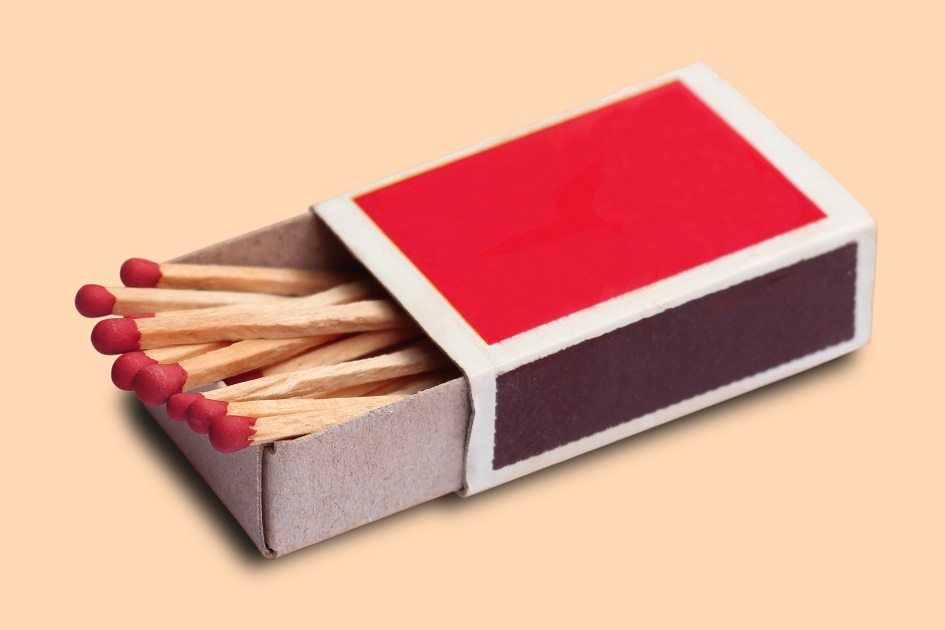In a digital-first world, brands often overlook the subtle power of physical objects. Yet, sometimes, the simplest items create the most lasting impressions. Among these, matchboxes—humble in appearance but rich in marketing potential—offer an authentic, tactile approach to branding that resonates deeply with today’s audience.
The Forgotten Impact of Tangible Marketing
For decades, physical marketing tools were the backbone of brand awareness. Before digital media became dominant, companies relied on business cards, flyers, and matchboxes to reach consumers. While many of these tools faded with time, matchboxes retained their charm due to their functional and collectible nature.
Tangible items engage the senses in ways digital ads cannot. They offer texture, weight, and sometimes even scent. This sensory interaction triggers memory retention and emotional connection. People are more likely to remember a brand when they’ve physically interacted with something it created. A stylishly designed matchbox serves as both a utility and a reminder—a tiny brand ambassador living in someone’s pocket, drawer, or desk.
In a hyper-connected era, people crave real-world experiences. Offering something physical makes your brand feel more personal. A matchbox is a conversation piece, not a fleeting notification. Unlike digital ads that disappear within seconds, this tool has staying power.
Physical marketing doesn’t aim to replace digital efforts. Instead, it complements them. When integrated thoughtfully, a branded matchbox reinforces a company’s identity while enhancing the customer experience. In sectors like hospitality, fashion, and artisanal goods, this form of marketing strengthens authenticity and increases emotional engagement.
As digital fatigue grows, consumers are becoming more selective about what they engage with. Companies that break the digital pattern with something tactile gain a valuable edge. And in this context, matchboxes stand as a subtle yet sophisticated way to leave a mark.
Branding with Purpose: A Visual Identity in Your Hands
A matchbox may be small, but its design capacity is vast. It is, in essence, a pocket-sized billboard—a canvas where your brand identity can come to life. Every design element matters, from color palettes to font choice to the placement of your logo. If done correctly, these elements communicate your message more clearly than many high-budget digital ads.
The shape and style of the matchbox should align with your branding. A luxury brand might choose a matte black finish with embossed gold lettering, while a quirky startup may lean toward vibrant colors and playful typography. Each detail should reinforce the brand voice, whether elegant, bold, minimalist, or rustic.
Graphic design plays a strategic role in storytelling. Illustrations, textures, and even the friction strip design can help convey a mood or ethos. A clean, minimalist aesthetic may appeal to a modern audience, while vintage or retro styles can invoke nostalgia and charm.
There’s also strategic value in interior space. Brands often print messages, coupons, or call-to-actions inside the matchbox lid. This adds an element of surprise and interactivity. For instance, a boutique perfumery might include a poetic quote, while a sustainable food brand may add a QR code linking to recipes or a behind-the-scenes video.
The level of customization available allows each matchbox to be as unique as the brand behind it. This isn’t just packaging—it’s storytelling in miniature form. When users find beauty in something so small and well-designed, they are more likely to keep it, talk about it, and remember the brand long-term.
Aligning Matchbox Campaigns with Brand Strategy
Marketing is never about gimmicks. It’s about purpose. When integrating a traditional tool like a matchbox into your strategy, it should align with your brand’s broader goals and values.
First, understand what the campaign aims to achieve. Is it building awareness, promoting a new product, or enhancing customer loyalty? Your design and distribution must support these objectives. For instance, if you’re launching a new candle line, a branded matchbox becomes a practical gift that ties perfectly into the customer experience.
Audience alignment is crucial. Consider your ideal customer: their habits, preferences, and lifestyle. Will they appreciate the novelty of a matchbox? Will it align with their values? If your audience values sustainability, emphasize eco-friendly materials. If they lean toward artistic expression, prioritize design and aesthetics.
Timing also matters. Seasonal campaigns—like holidays or product launches—can make matchboxes feel timely and thoughtful. A limited-edition design released during the winter holidays, for example, can boost exclusivity and collectability.
Partnerships amplify the message. Brands can collaborate with artists, influencers, or other businesses to co-create limited-edition matchboxes. These partnerships expand reach while introducing your brand to new audiences through authentic storytelling.
Ultimately, a matchbox isn’t just an object—it’s an extension of your strategy. By embedding it within a broader marketing ecosystem, from social media teasers to in-store promotions, brands can ensure that each matchbox plays a precise, measurable role in their growth journey.
Creative Distribution Channels That Maximize Exposure
Design alone isn’t enough. Where and how matchboxes are distributed is equally important. Distribution strategy defines who interacts with your brand and under what circumstances.
In retail environments, placing matchboxes at checkout counters or including them in packaging adds a thoughtful, personal touch. Customers love receiving unexpected gifts—especially ones that are practical or beautiful. These moments of delight increase customer satisfaction and brand recall.
Events offer another powerful opportunity. Pop-up shops, product launches, gallery openings, or networking events can all benefit from branded matchbox giveaways. They add sophistication and memorability to the experience, especially when aligned with the theme of the event.
In the hospitality industry, matchboxes are almost expected. Placing them in hotel rooms, restaurant host stands, or cocktail lounges adds a nostalgic and luxurious detail. Guests often pocket these as mementos, turning them into long-term brand ambassadors.
Here are a few high-impact distribution ideas:
- Include one in every online order box.
- Add them to VIP customer mailings.
- Offer them exclusively at limited-time in-store promotions.
- Partner with influencers to feature them in unboxing videos.
- Distribute them at lifestyle events like fashion weeks or food festivals.
The goal is to put the matchbox in the hands of someone who’ll appreciate its design, find it useful, and remember where it came from. Done well, this simple gesture becomes a lasting connection between brand and consumer.
Enhancing Brand Personality Through Functional Design
Matchboxes serve a practical purpose—lighting a candle, a fire, or even a cigar. But their true marketing magic lies in merging function with form. Every time someone uses it, they’re engaging with your brand.
Think of the matchbox as a tactile business card. Unlike paper cards that often end up forgotten in drawers, matchboxes offer repeated interaction. Every strike becomes a brand touchpoint. This repetition builds trust and familiarity, especially when the design evokes pleasure or curiosity.
Functionality doesn’t mean sacrificing creativity. Modern production techniques allow for advanced finishes—such as textured paper, foil stamping, die cuts, and scent infusion. This enhances user experience while reinforcing brand identity.
Moreover, integrating design with practicality adds surprise and delight. A hidden message revealed when the box opens, a scented strip aligned with a fragrance campaign, or a humorous quote inside—these elements elevate the experience beyond utility.
The matchbox, when thoughtfully designed, reflects the brand’s core. It tells customers, “We care about the details.” This attention to nuance builds perceived value, even in something as small as a box of matches.
Sustainability and Ethical Messaging
Sustainability is no longer optional—it’s expected. Modern consumers demand ethical responsibility from the brands they support. Matchboxes, when made using eco-friendly materials, become tools of both branding and advocacy.
Sourcing recycled paper, using water-based inks, and avoiding plastic shrink wraps reduce environmental impact. Communicating these choices clearly on the matchbox itself adds to brand transparency. For example, including “Made from 100% recycled materials” or “Printed with soy-based inks” signals conscious production.
Sustainable packaging reflects corporate values. It tells consumers the brand is aware, modern, and cares about more than profit. This connection is powerful. It builds trust and cultivates loyalty among a new generation of environmentally conscious buyers.
Companies that highlight sustainability can further use matchboxes as educational tools. A message inside might share a tip on reducing waste or explain how the brand offsets carbon emissions. This positions the brand not just as a seller, but as a responsible leader.
By aligning form, function, and ethics, brands create a marketing tool that does more than advertise—it educates, engages, and elevates.
From Utility to Collectibility: Driving Long-Term Visibility
One unexpected benefit of matchbox marketing is collectability. When designs are visually striking or thematic, people don’t throw them away—they keep them. Some even collect them over years.
This long shelf life provides ongoing brand exposure. A beautifully designed matchbox becomes part of a desk, a kitchen drawer, or even a framed art piece. Every time it’s seen or shared, it reinforces brand recall.
Collectors often share unique finds on social media, generating free promotion. A limited-edition series or seasonal release encourages users to return, engage, and even request more. This creates a subtle loyalty program without needing digital infrastructure.
Over time, these small objects form a larger brand narrative. They represent moments, campaigns, and milestones in your company’s growth. As they stack up, they tell a story—a story customers can touch, see, and remember.
Conclusion
In an era dominated by digital ads and fleeting impressions, traditional marketing tools like matchboxes offer something refreshingly human—connection, authenticity, and longevity. Their small size holds surprising power: from enhancing brand identity to sparking emotional connections and even promoting sustainability. When designed thoughtfully and distributed strategically, they become more than just practical items—they become lasting brand messengers.
Using this simple object creatively allows businesses to break through digital fatigue and offer something tangible and memorable. Whether through custom artwork, eco-friendly materials, or clever messaging, matchboxes deliver meaningful engagement. They create moments that customers don’t just see—but experience, use, and remember.
Visit Our Website: https://ibexpackaging.com/custom-matches/



